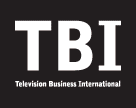- Board of Governors
- Board of Directors
- Privacy Policy
- Contact Us
- Archive
Digital Media Asset Management: Best Practices
If you're managing digital media assets, you know how quickly things can spiral without a solid system in place. It's not just about filing files—you need clarity, structure, and ongoing oversight. With so many moving parts and stakeholders, a few missteps can cost your team both time and resources. Before you upload another file or share another link, consider if your approach really sets you up for efficiency—or if it leaves you exposed to bigger problems.
Define Clear Objectives for Your DAM System
Before implementing a Digital Asset Management (DAM) system, it's essential to clearly define the objectives you aim to achieve. Start by identifying primary reasons for the initiative, such as improving productivity and maintaining brand consistency. Establish specific, measurable goals like reducing asset retrieval time or enhancing collaboration across teams.
Engagement with stakeholders from various departments at the outset is important to ensure that their requirements and challenges are considered. Develop performance metrics to monitor the progress towards these goals and establish a process for collecting user feedback, which can inform ongoing system improvements.
This structured approach facilitates a direct link between the use of the DAM system and business outcomes, enabling a more accurate assessment of return on investment (ROI) as the system's implementation evolves over time.
Conduct a Thorough Digital Asset Audit
Initiating a digital asset management process begins with conducting a comprehensive digital asset audit, which is essential for understanding the existing inventory and its organization.
This audit involves evaluating the various digital assets, identifying duplicate files, and removing outdated or redundant content to enhance overall asset management efficiency.
A thorough review of the asset organization is necessary to ensure that folder and file names adhere to established naming conventions, which contribute to a more systematic approach to asset retrieval.
Additionally, defining critical metadata and tagging categories during the audit is important for improving the discoverability of assets within the system.
Establishing a clear asset taxonomy at this stage can facilitate collaboration among different teams by making resources more easily accessible.
It's also advisable to implement a routine schedule for conducting audits to ensure that the inventory remains current and efficient.
Regular audits can contribute to continuous improvements in the performance of the digital asset management system.
Develop Robust Governance and Access Controls
A structured approach to digital media asset management relies on effective governance and access controls. The initial step involves defining specific user roles and establishing a permissions-based structure to ensure that only authorized personnel have access to or the ability to modify sensitive assets.
Documenting usage rules and delineating access levels within a governance framework is essential for compliance with data protection regulations.
To maintain alignment with both business objectives and regulatory standards, it's advisable to conduct regular audits of user access. Implementing additional security measures, such as multi-factor authentication and data encryption, further mitigates risks associated with unauthorized access.
Thorough documentation of governance policies and access controls facilitates the onboarding process and holds users accountable, thereby promoting a secure and compliant environment.
Appoint a Dedicated Digital Asset Manager
Appointing a dedicated Digital Asset Manager can significantly enhance the effectiveness of your asset management strategies. This role is responsible for overseeing compliance, organizing digital assets, and ensuring that they're current.
With a focus on continuous monitoring, a Digital Asset Manager can assess asset usage patterns, which may help improve workflows and collaboration among teams. This is particularly important for maintaining brand consistency.
In addition to overseeing asset organization, a Digital Asset Manager can help alleviate the workload of existing staff by managing the curation and distribution of digital assets. By maximizing the value of the asset library, this centralized management approach can lead to greater efficiency in operations.
Furthermore, ensuring that digital assets are effectively utilized can contribute to a stronger return on investment for the organization.
Standardize Naming Conventions and Metadata
To ensure digital assets are easily accessible within an organization, it's essential to implement standardized naming conventions and a clearly defined metadata structure.
Adopting consistent naming rules, such as avoiding spaces and special characters, can enhance search and retrieval capabilities while minimizing the risk of system errors during file sharing across various platforms.
Establishing a robust metadata framework that includes relevant attributes—such as title, description, keywords, and category—can significantly improve the discoverability of digital assets and contribute to overall organizational efficiency.
Regular reviews of these standards are advisable to ensure that they remain relevant and aligned with evolving business needs.
It is also crucial to provide training for users on the correct application of metadata. Such training can enhance proficiency and ensure that digital content remains accessible to all stakeholders involved.
Establish Security and Compliance Protocols
Digital assets are essential for facilitating collaboration and creativity in contemporary organizational settings; however, they also present inherent risks that necessitate stringent security and regulatory oversight.
To effectively safeguard digital assets, organizations should implement comprehensive data protection measures, including but not limited to firewalls and encryption technologies.
Utilizing digital asset management (DAM) systems with role-based access controls can help ensure that user permissions are clearly defined and strictly adhered to, reducing the risk of unauthorized access.
Compliance with licensing agreements and asset usage rights should be upheld through regular audits and systematic tracking of asset utilization to identify and address potential discrepancies.
A well-structured governance framework is critical in establishing security protocols, user responsibilities, and compliance policies.
Such frameworks promote consistency across the organization and mitigate risks associated with digital asset management.
Design and Deliver Effective User Training
To ensure robust security and compliance protocols within a Digital Asset Management (DAM) system, it's essential for all users to be well-informed on proper interactions with the system.
Achieving effective implementation of DAM requires a structured onboarding program that includes hands-on training sessions, video tutorials, and comprehensive user manuals. Emphasizing the importance of metadata standards and best practices is critical for establishing a solid foundation for users.
Continual training updates are necessary to maintain user proficiency as the DAM system undergoes changes and improvements. Encouraging collaboration through cross-departmental workshops and feedback sessions can facilitate knowledge sharing among users.
To assess users' comprehension, surveys and assessments can be employed, allowing for the refinement of future training initiatives.
In addition, providing easily accessible online resources such as FAQs can assist users in troubleshooting and navigating the platform independently, thus enhancing their overall proficiency with the DAM system.
Integrate DAM With Existing Business Tools
Integrating a Digital Asset Management (DAM) system with existing business tools, such as Customer Relationship Management (CRM), Content Management Systems (CMS), and marketing automation platforms, can enhance operational workflows and facilitate better collaboration among teams.
This integration allows for efficient asset retrieval and management, as it ensures that all digital assets are up-to-date, thereby mitigating potential issues related to outdated content and reinforcing brand consistency.
Utilizing Application Programming Interfaces (APIs) enables real-time asset sharing, which can significantly improve responsiveness and task execution.
Furthermore, connecting the DAM to project management tools can streamline processes such as task assignments and approvals, fostering a more organized approach to collaboration.
It is also advisable to ensure compatibility with analytics tools. By tracking asset performance across various channels, organizations can gain insights that inform marketing strategies and improve workflow effectiveness.
Implement Continuous Monitoring and Analytics
A comprehensive Digital Asset Management (DAM) strategy incorporates continuous monitoring and analytics as essential components. Utilizing analytics tools available within your DAM system enables the tracking of asset performance metrics in real time. Analyzing user engagement patterns can provide insights that inform resource allocation strategies and enhance workflow efficiency. Research indicates that systematic analysis in this area can lead to significant improvements in productivity.
Additionally, conducting periodic audits yields valuable insights, allowing organizations to identify high-value assets and enhance the relevance of their content.
Compliance monitoring is an important aspect of this process; automated checks concerning usage rights and licensing can mitigate legal risks associated with asset management. Evidence suggests that implementing such practices can contribute to a reduction in compliance-related issues.
Streamline Asset Distribution and Collaboration
Effective asset distribution is crucial for enhancing collaboration in digital environments. Digital asset management (DAM) systems serve as a centralized platform that facilitates streamlined asset distribution and simplifies access for users.
By assigning user permissions, organizations can protect sensitive files while allowing for collaborative efforts across different teams. Automating workflows can minimize the necessity of manual sharing, enabling team members to concentrate on creative tasks rather than coordination issues.
Additionally, integrating real-time discussions and feedback mechanisms within the asset management system can enhance the speed of decision-making and approvals.
It is also important for organizations to regularly assess their asset management and distribution methods. This allows for the continual optimization of processes, ensuring they foster both collaboration and efficiency.
Adopting these practices is essential for maintaining a secure and productive digital content workflow.
Conclusion
By following these best practices, you’ll unlock the full potential of your digital media asset management system. Define clear goals, keep your assets organized with solid governance, and empower your team with effective training. With the right structure and constant monitoring, you’ll streamline collaboration, boost productivity, and adapt quickly as your organization’s needs change. Take these steps, and you’ll ensure your digital assets work harder and smarter for you every day.









